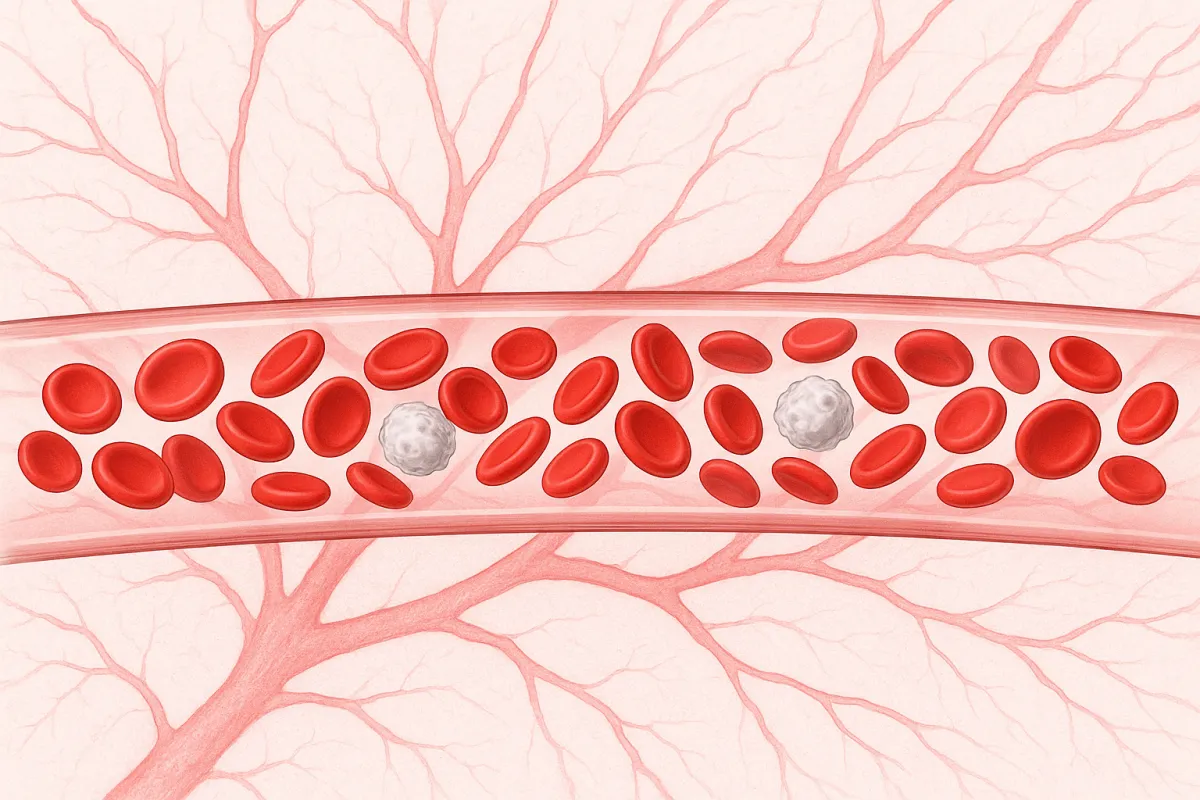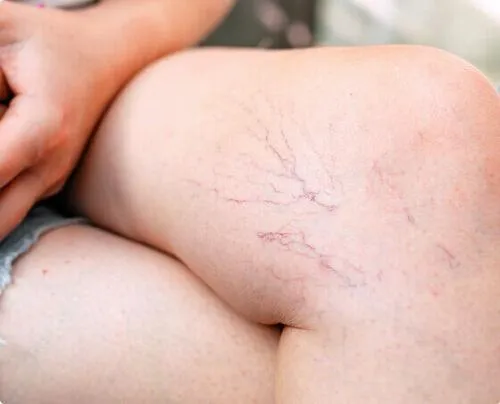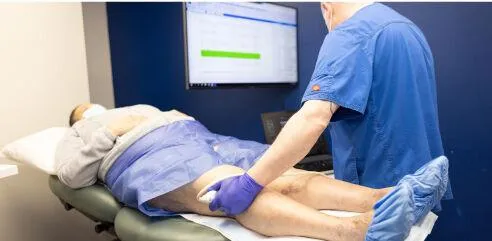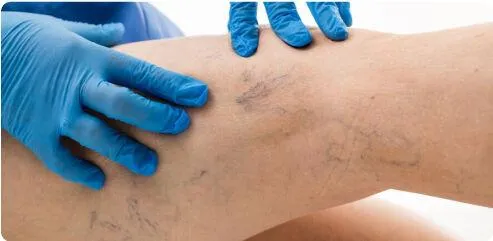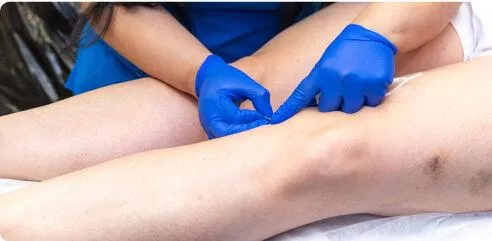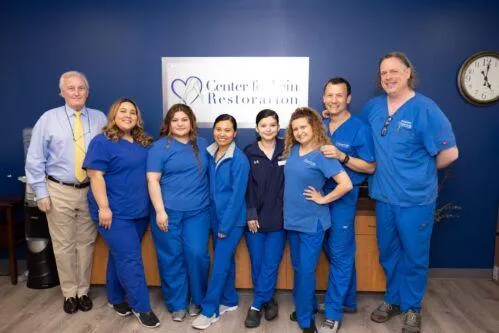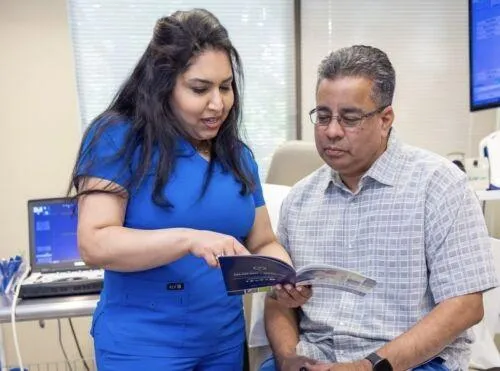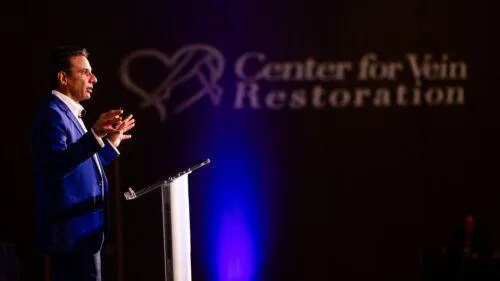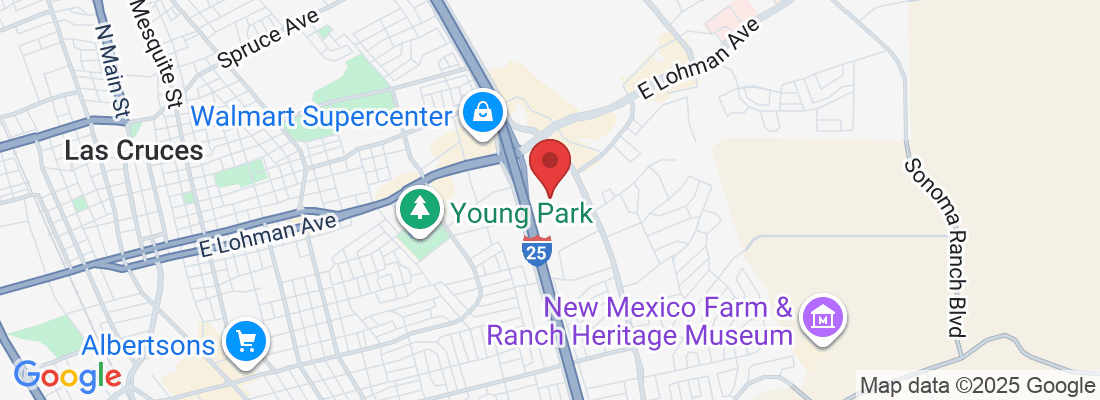575-519-6613
English
Espanol
Varicose Veins
Causes, Symptoms, and Treatment
Could You Be Living With Vein Disease?
If you’re dealing with venous insufficiency (vein disease), you know the symptoms all too well — aching, cramping, swelling, feelings of heaviness, and visible twisted or bulging blue and purple veins. When left untreated, vein disease can progress and lead to more serious issues such as skin changes, slow-healing leg ulcers, or even blood clots.
Click below to discover what varicose veins are, what causes them, the risk factors involved, the symptoms to watch for, and the treatment options available.
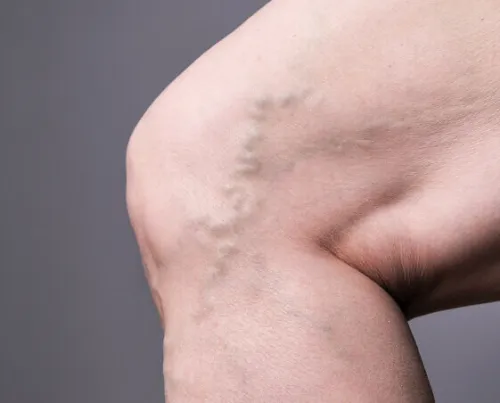
What are varicose veins?
Varicose veins are enlarged, twisted veins that commonly occur in the legs and feet. They develop when tiny valves within the veins don’t work as they should, causing blood to flow backward and pool in the lower limbs. This increases pressure in the veins, causing leg veins to swell and stretch. The increased pressure results in fluid in the leg, which causes heaviness, a constant dull ache, leg fatigue, cramps, and itchiness. If the pressure becomes too great, blood can leak into the skin, causing the skin to turn brownish-black.
Over time, problem blood circulation in the leg veins causes the skin to lose suppleness and flexibility, and skin can gradually take on a hardened texture. In some advanced cases, the skin can rupture, causing an open sore, known as a venous ulcer or venous stasis ulcer, to form. Venous ulcers affect approximately 4 percent of Americans aged 65 and over.
Each year, the complications that result from chronic venous insufficiency (CVI) contribute to the loss of over one million workdays in the United States.
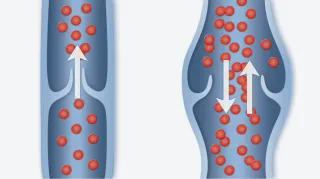
How common are varicose veins?
Between 20-30 million Americans have varicose veins. Risk factors include heredity, gender, age, weight, pregnancy, history of deep vein thrombosis (DVT and blood clots), and standing or sitting for prolonged periods. By age 50, 41 percent of women will suffer from varicose veins. By the time they reach their 60s, 42 percent of men will suffer from symptoms related to venous insufficiency.
Fast facts about vein disease:
Varicose veins are an inherited genetic disorder. The gene is autosomal dominant with variable penetrance. (In laypeople's terms, this means that the gene is passed down to every generation, but certain environmental factors are required to activate the gene). For example, estrogen and progesterone (the two most important hormones in the female body) activate the gene, increasing the risk for women. Heavy lifting, obesity, and prolonged standing and sitting can also activate the gene over time.
Almost 50 percent of varicose vein patients have a family history of the disease.
Your chances of developing varicose veins are over 90 percent if both your parents have the disease.
Daughters have a 60 percent chance, while sons have a 25 percent chance of developing varicose veins if only one parent has the disease.
Varicose veins affect women more than men: 55 percent of women and 45 percent of men.
An estimated 41 percent of women over age 50 have varicose veins.
Moderately overweight women (with a BMI of 25.0 to <30) have a 50 percent increased risk of developing varicose veins.
Women with a BMI greater than 30 are three times as likely to develop varicose veins.
Pregnancy increases the risk of developing both spider veins and varicose veins.

How are varicose veins diagnosed?
To diagnose varicose veins, your vein specialist will start by reviewing your medical history and checking for common symptoms of venous insufficiency. A physical exam helps determine where the veins are affected and how severe the condition may be.
One of the most important tools in diagnosis is a venous ultrasound, which uses sound waves to evaluate blood flow and vein function. During this test, your care team, including a vascular technologist and your physician, will check for reflux (blood moving in the wrong direction), as well as signs of blood clots or past vein damage.
Sometimes, deeper veins in the abdomen or pelvis are harder to assess with ultrasound. In these cases, more advanced imaging such as a CT scan or MRI may be recommended. In rare situations, your doctor may perform a venogram. This procedure involves injecting a contrast dye into the veins and taking X-ray images to get a detailed view of blood flow and detect possible blockages that can be treated.
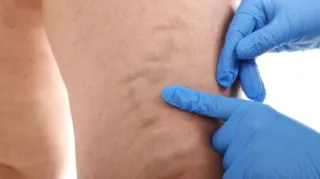
Quick Relief, Faster Return to the Activities You Love
How do you test for varicose veins?
Duplex ultrasound
A vascular ultrasound is a noninvasive test used to examine blood flow and the structure of the veins in your legs.
Color-flow imaging (also called triplex ultrasound)
This test works much like a duplex ultrasound but adds color imaging to show the direction of blood flow.
Magnetic resonance venography (MRV)
Magnetic resonance venography (MRV) is a test that uses powerful magnets and computer imaging to create detailed pictures of your veins. A contrast dye may be injected to make the veins easier to see. In addition to detecting vein problems, an MRV can sometimes reveal other possible causes of leg pain.
CT Scan
Another diagnostic option is a CT scan, which combines X-ray technology with computer processing to create detailed images of the body.
Try our self-assessment
Schedule your consultation with a Vein and Vascular specialist in Las Cruces today.
Contact Vein and Vascular in Las Cruces today: schedule online, call +1 575-519-6613, or complete the form. Our patient services team is ready to assist you Monday through Friday.
Contact Us
Ready to book an appointment now?
Contact
700 S. Telshor
Suite 1460
Las Cruces, NM 88011

